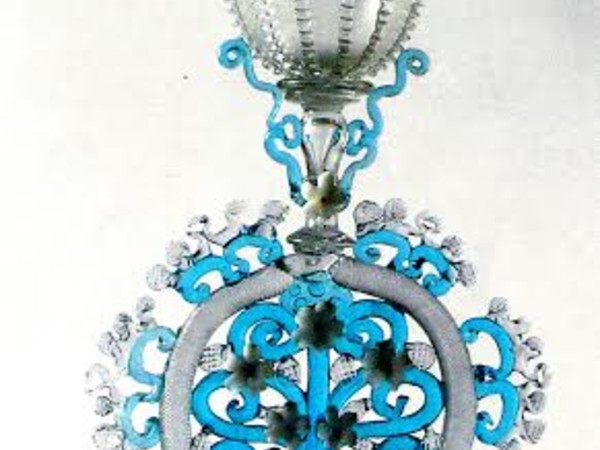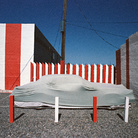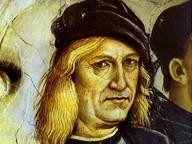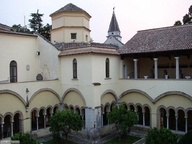Days of glass 2015

Giornate del vetro 2015, Istituto Veneto di Scienze, Lettere ed Arti, Venezia
From 11 Marzo 2015 to 13 Marzo 2015
Venice
Place: Venetian Institute of Sciences, Letters and Arts
Address: S. Marco 2945
Organizers:
- Glass in Venice
- Istituto Veneto di Scienze
- Lettere ed Arti
- MUVE
Telefono per informazioni: +39 041 2407711
E-Mail info: ivsla@istitutoveneto.it
Official site: http://www.istitutoveneto.it
The edition of 2015 of the Days of glass, organized by the Institute of Sciences, Letters and Arts as part of the Glass in Venice, dedicated to the nineteenth century, a period characterized by the taste of revivals and rediscoveries they are born the great museums of and decorative arts collections glassmaking.
The program includes reports of historical and art-historical analysis of styles and materials, including the presentation of modern analytical techniques for the dating of the artifacts used today by some of the leading museums in Europe, to demonstrations of some techniques execution of particular importance, and commented performed in a furnace in Murano, where he worked one of the greatest masters of Murano. The program includes a visit to the State Archives of Venice, which houses important documents, inventory, recipe books etc., Particularly useful for the study of the most significant aspects of glass production in Venice. You will also visit a large private collection and deposit of the Murano Glass Museum.
The major museums of art and decorative art in Europe and America were founded in the nineteenth century, or, if they are based in the following century, however, were enriched in private collections formed prior. The old glass, especially the Roman and Venetian, was rediscovered at the time and received the interest of historians, art historians and scholars from the archives.
They were then written the first book focused on the history of glass, it drew up the catalogs of public and private collections and were published catalogs of the many temples, which came true masterpieces in museums around the world.
The creation of these museums and collections of these marked a turning point in the history of culture, but some masterpieces, but already known in the nineteenth century, have not been studied as they deserve. This phenomenon will be the theme of the next part of the Study Days of the glass, as well as the problem of making copies and fakes in the same nineteenth century. In an age of revival, in fact, the museum of decorative arts - Victoria & Albert Museum and the Glass Museum of Murano, for example - they often institutional mission to offer role models to contemporary craftsmen. Today, students of glass art not only consider with interest the glass production of the revival but are also engaged in the identification of antiques and pieces of the nineteenth century as part of museum collections.
Scientific Committee
Rosa Barovier Mentasti, historian of glass; Sandro Franchini, Institute of Sciences, Arts and Letters; William GUDENRATH, Corning Museum of Glass; Lorenzo Lazzarini, blade-IUAV University of Venice; Sandro Pezzoli, Collector; Lino Tagliapietra, Artist and glass master; Cristina Tonini, art historian; Mark Truth, blade-IUAV University of Venice.
The program includes reports of historical and art-historical analysis of styles and materials, including the presentation of modern analytical techniques for the dating of the artifacts used today by some of the leading museums in Europe, to demonstrations of some techniques execution of particular importance, and commented performed in a furnace in Murano, where he worked one of the greatest masters of Murano. The program includes a visit to the State Archives of Venice, which houses important documents, inventory, recipe books etc., Particularly useful for the study of the most significant aspects of glass production in Venice. You will also visit a large private collection and deposit of the Murano Glass Museum.
The major museums of art and decorative art in Europe and America were founded in the nineteenth century, or, if they are based in the following century, however, were enriched in private collections formed prior. The old glass, especially the Roman and Venetian, was rediscovered at the time and received the interest of historians, art historians and scholars from the archives.
They were then written the first book focused on the history of glass, it drew up the catalogs of public and private collections and were published catalogs of the many temples, which came true masterpieces in museums around the world.
The creation of these museums and collections of these marked a turning point in the history of culture, but some masterpieces, but already known in the nineteenth century, have not been studied as they deserve. This phenomenon will be the theme of the next part of the Study Days of the glass, as well as the problem of making copies and fakes in the same nineteenth century. In an age of revival, in fact, the museum of decorative arts - Victoria & Albert Museum and the Glass Museum of Murano, for example - they often institutional mission to offer role models to contemporary craftsmen. Today, students of glass art not only consider with interest the glass production of the revival but are also engaged in the identification of antiques and pieces of the nineteenth century as part of museum collections.
Scientific Committee
Rosa Barovier Mentasti, historian of glass; Sandro Franchini, Institute of Sciences, Arts and Letters; William GUDENRATH, Corning Museum of Glass; Lorenzo Lazzarini, blade-IUAV University of Venice; Sandro Pezzoli, Collector; Lino Tagliapietra, Artist and glass master; Cristina Tonini, art historian; Mark Truth, blade-IUAV University of Venice.
SCARICA IL COMUNICATO IN PDF
COMMENTI

-
 Dal 20 dicembre 2024 al 04 maggio 2025
Fermo | Palazzo dei Priori
Dal 20 dicembre 2024 al 04 maggio 2025
Fermo | Palazzo dei Priori
-
 Dal 20 dicembre 2024 al 04 maggio 2024
Gorizia | Palazzo Attems Petzenstein
Dal 20 dicembre 2024 al 04 maggio 2024
Gorizia | Palazzo Attems Petzenstein
-
 Dal 18 dicembre 2024 al 18 dicembre 2024
Venezia | Museo Correr
Dal 18 dicembre 2024 al 18 dicembre 2024
Venezia | Museo Correr
-
 Dal 14 dicembre 2024 al 02 marzo 2025
Palermo | Palazzo Abatellis
Dal 14 dicembre 2024 al 02 marzo 2025
Palermo | Palazzo Abatellis
-
 Dal 12 dicembre 2024 al 23 febbraio 2025
Roma | Palazzo Altemps
Dal 12 dicembre 2024 al 23 febbraio 2025
Roma | Palazzo Altemps
-
 Dal 13 dicembre 2024 al 31 agosto 2025
Roma | Museo dell'Ara Pacis
Dal 13 dicembre 2024 al 31 agosto 2025
Roma | Museo dell'Ara Pacis


